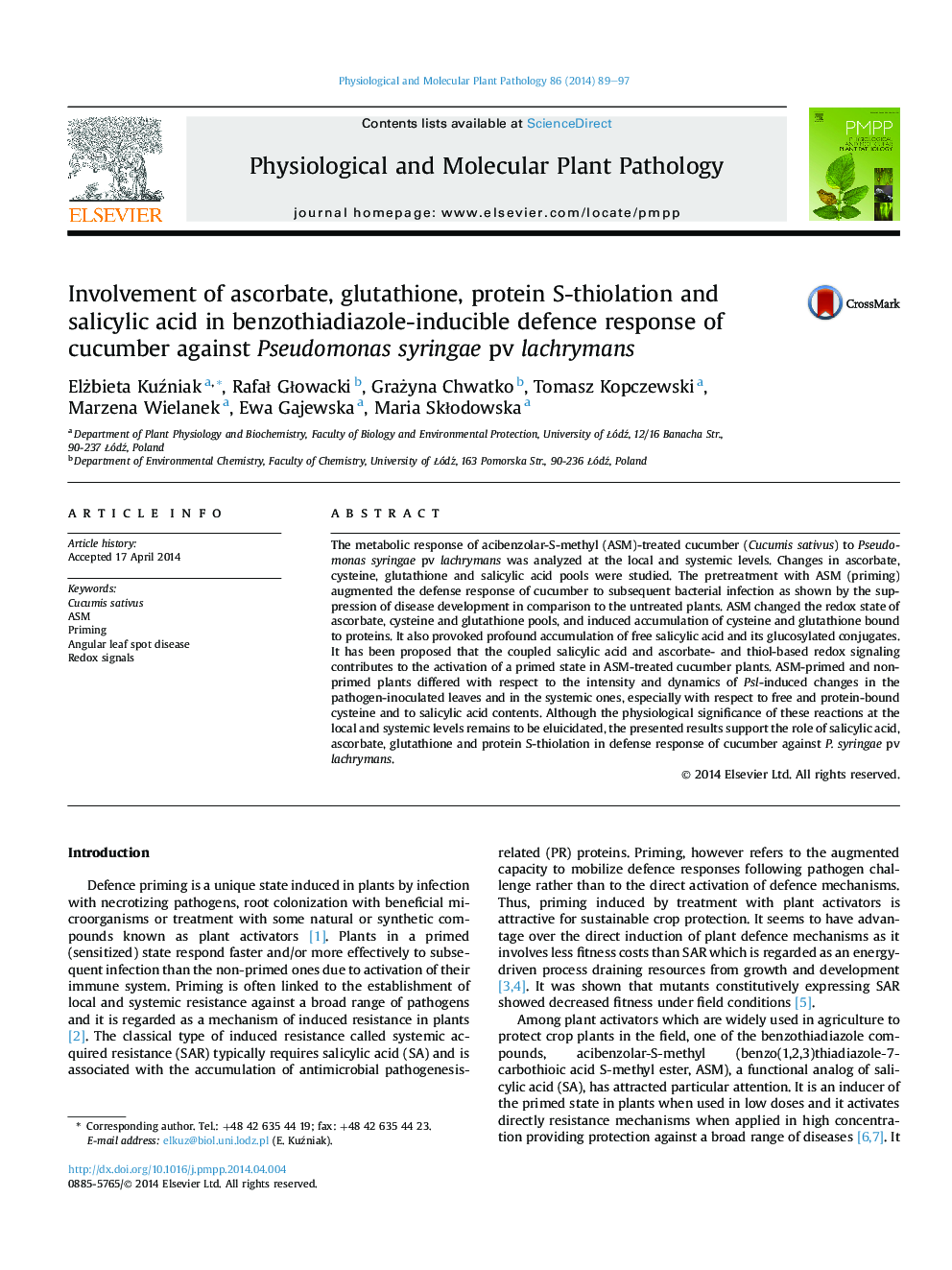| Article ID | Journal | Published Year | Pages | File Type |
|---|---|---|---|---|
| 2836321 | Physiological and Molecular Plant Pathology | 2014 | 9 Pages |
•ASM restricted the development of Pseudomanas syringae pv lachrymans in cucumber.•ASM-induced priming was related to SA accumulation and redox changes in the ascorbate, cysteine and glutathione pools.•Protein S-thiolation could be involved in activation of the primed state in ASM-treated cucumber plants.
The metabolic response of acibenzolar-S-methyl (ASM)-treated cucumber (Cucumis sativus) to Pseudomonas syringae pv lachrymans was analyzed at the local and systemic levels. Changes in ascorbate, cysteine, glutathione and salicylic acid pools were studied. The pretreatment with ASM (priming) augmented the defense response of cucumber to subsequent bacterial infection as shown by the suppression of disease development in comparison to the untreated plants. ASM changed the redox state of ascorbate, cysteine and glutathione pools, and induced accumulation of cysteine and glutathione bound to proteins. It also provoked profound accumulation of free salicylic acid and its glucosylated conjugates. It has been proposed that the coupled salicylic acid and ascorbate- and thiol-based redox signaling contributes to the activation of a primed state in ASM-treated cucumber plants. ASM-primed and non-primed plants differed with respect to the intensity and dynamics of Psl-induced changes in the pathogen-inoculated leaves and in the systemic ones, especially with respect to free and protein-bound cysteine and to salicylic acid contents. Although the physiological significance of these reactions at the local and systemic levels remains to be eluicidated, the presented results support the role of salicylic acid, ascorbate, glutathione and protein S-thiolation in defense response of cucumber against P. syringae pv lachrymans.
